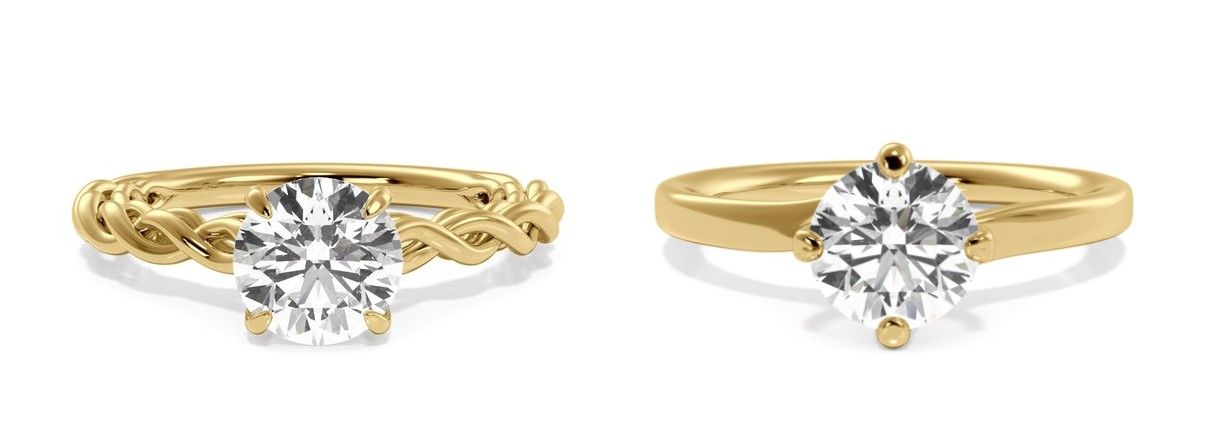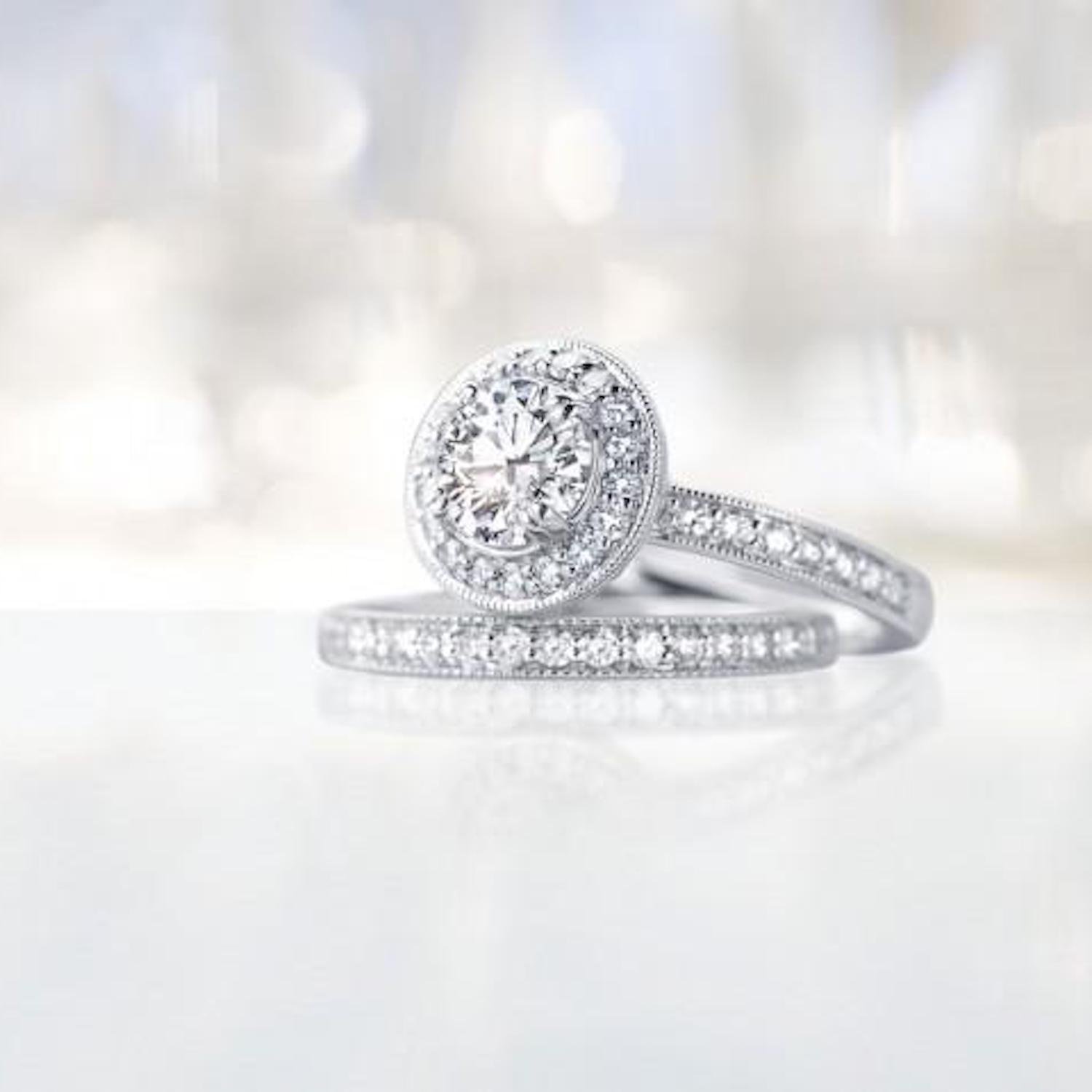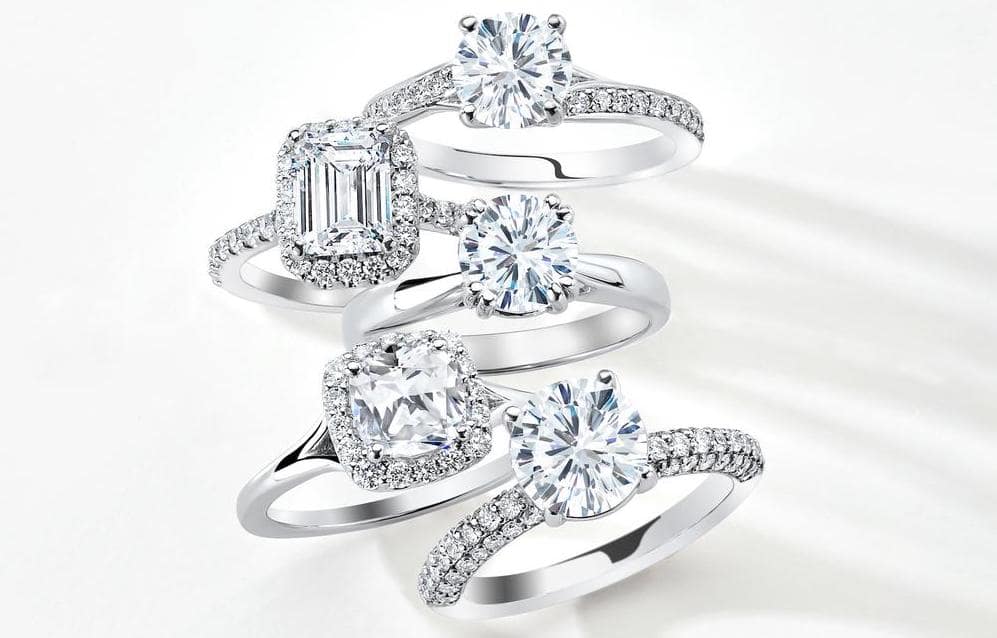Most Popular Engagement Ring Settings and Styles
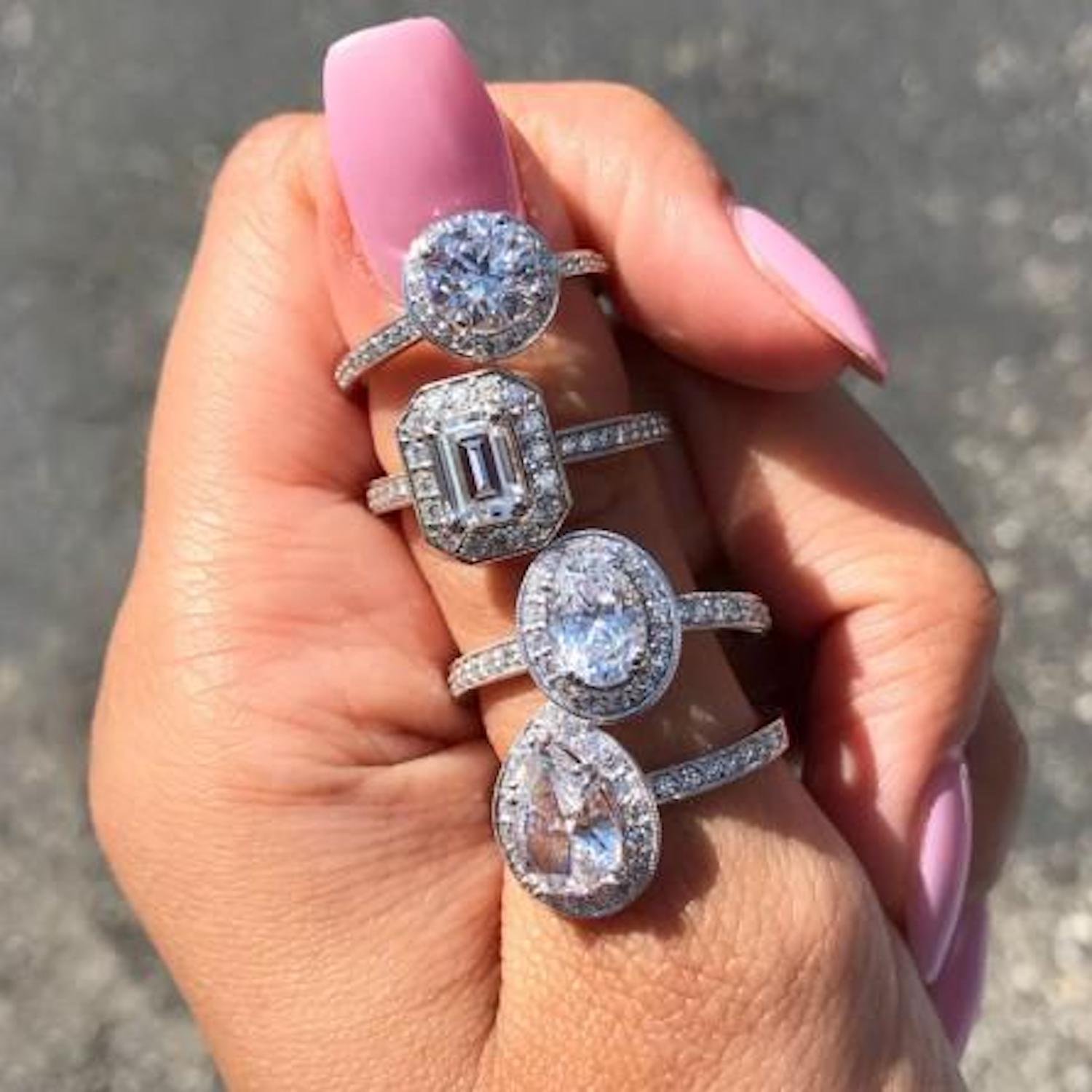
Engagement rings are made up of two important components: the center stone and the ring setting. While some may argue that one is more important than the other, the reality is that your special someone will be wearing both for the rest of your lives together.
If this is your first foray into the wonderful world of engagement rings, you may find all the options and factors that need to be considered a bit daunting. Luckily, we’ve already broken down everything you need to know about selecting a high-quality diamond in this article.
Now, for the fun part. Stones of nearly all shapes and sizes can be fitted to most major setting styles. Additionally, these basic settings can be modified in various ways to achieve a truly unique effect. This is especially true at Ritani, where we handcraft each ring to ensure an perfect fit with your stone.
To help you navigate the options and hone in on your individual aesthetic, we present the most common engagement ring styles and settings.
Four Classic Engagement Ring Styles
The following make up the five basic categories of engagement ring styles. Although they may have different names according to retailer, their iconic shapes are unmistakable.
1. Solitaire
A solitaire setting features a single center diamond or gemstone atop a metal band, and can be found in either prong or bezel styles.
The prong style is what most shoppers picture when they think of a traditional engagement ring. Prongs are vertical elements on a band that hold a diamond in place. You can choose four, six or double-prongs depending on the look you want.

Four-prong solitaire setting in rose gold.
On the other hand, a full bezel setting completely encircles the center diamond or gemstone in the band’s metal. The full bezel is perhaps the most secure type of diamond setting since there are no prongs or other sharp edges that can be caught or scraped. Semi-bezel options partially surround the center stone, letting in more light and increasing refraction, thus brilliance.

Semi bezel solitaire setting in white gold.
2. Halo
Like the solitaire, a halo setting is designed to hold a single diamond or gem. The difference is that a halo setting has a wide band of metal encircling the girdle of the diamond, and it is studded with smaller diamonds (often in pave or micropave style).
While halo settings are most commonly used to encircle round, oval or cushion shaped diamonds, they can be used with any stone shape. To create a more unique halo ring, jewelers may use an asscher, marquise or pear shaped center diamond.
The halo effect not only creates extra sparkle, but also larger overall size and total carat weight. This setting is one of the most popular choices for modern shoppers.

Halo setting in yellow gold.
3. Three-Stone
The three-stone engagement ring setting features a larger center diamond or gem flanked by two additional stones on either side. The three stones are symbolic of the past, present and future. The two side stones are typically smaller in size than the central one, but the difference can vary. A popular way to customize the three-stone setting is to mix and match diamonds and gemstones. It is increasingly popular, for example, to pair a center diamond with emerald, sapphire or ruby side stones. Additionally, you can mix different stone shapes to beautiful effect, as in the ring below: a round center diamond flanked by tapered side baguettes.
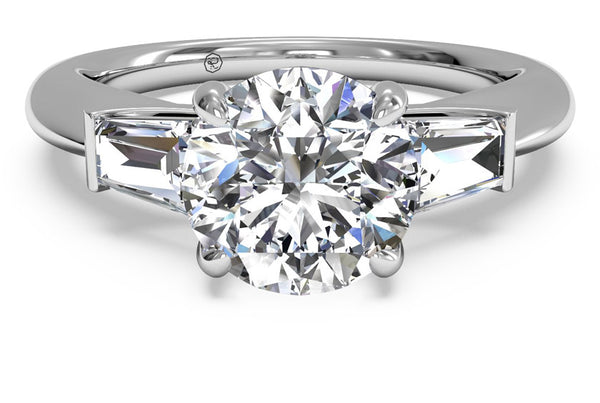
Three-stone setting in white gold
4. Cathedral
Last but not least, the cathedral setting is a stunning architectural modification to the traditional solitaire. Much like the shape of an actual cathedral, this band gradually rises vertically and comes to a steeple-like point where the center diamond or gemstone rests. This not only adds structural stability, but also lifts the center stone further upward. The boost in height allows extra light to refract throughout the diamond, creating greater sparkle and brilliance. It is also possible to add side stones to a classic cathedral setting — the effect is a stunning Three-Stone Cathedral.
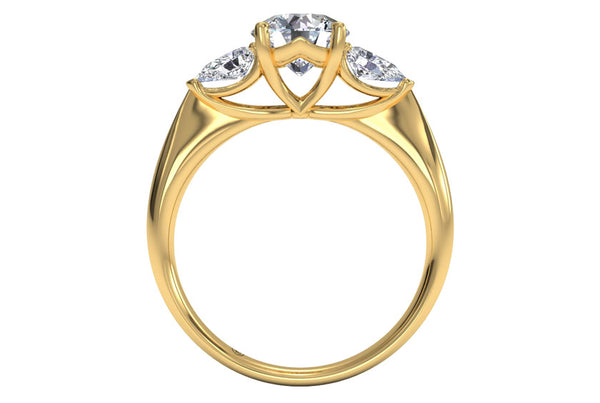
Three-stone cathedral engagement ring in yellow gold.
Six Ways to Customize Your Ring Band
The following methods can be used to add diamonds to any engagement or wedding ring band. They also describe the various ways that small diamonds can be secured in a halo setting.
1. Pavé Set Diamonds
In French, pavé means “cobblestone.” The term also refers to the way the diamonds fit together perfectly in a pavé setting, much like the stones on a cobblestone street. Though similar to a French setting in that both styles feature a strand of small diamonds secured by tiny prongs, a pavé setting is unique in one subtle way: its diamonds are inset into a groove rather than raised. Pavé is also different from a channel setting, which uses the pressure of the band, not prongs, to hold diamonds in place.
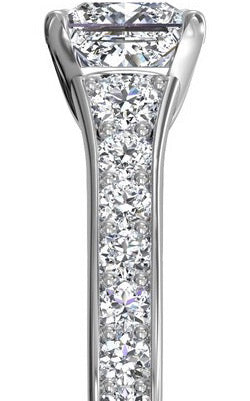
Detail view of diamond pavé band.
2. Micropavé Set Diamonds
A micropavé band uses even smaller diamonds than its pavé counterpart, making for an extremely precise and delicate setting. While a pavé style typically only has one strand of diamonds, a micropavé can have several. These are arranged in a checkered pattern, with two or more rows of diamonds lining the band.

Detail view of diamond micropavé band.
3. Channel Set Diamonds
A channel design features small diamonds inset into a groove, usually following the curve of the ring band. These stones are held in place by the pressure of the sides of the ring, much like a rail. This is distinct from pavé diamond settings which are held in place by prongs. Channel settings tend to create a strong, angular effect while pavé settings fall more on the delicate side of the style spectrum.
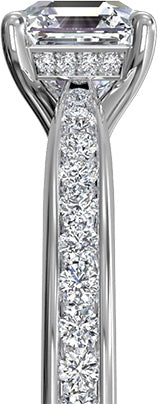
Detail view of channel set diamond band.
4. French Set Diamonds
The French setting features small diamonds raised with prongs around the band or in a halo around the center stone. The look creates the effect of a single, continuous line of sparkle. A double French setting features two smaller lines of diamonds around the band instead of one larger line.
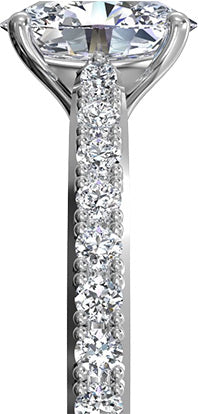
Detail view of a French set diamond band.
Creating Your Unique Engagement Ring
No matter the shape or size of your gemstone, you can leverage major setting styles and popular diamond additions to create an engagement ring as unique and unforgettable as your love story. Start building your custom engagement ring today.
